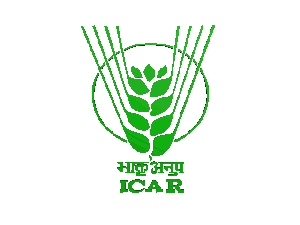Challenges due to livestock feeding and nutrition
Vast areas of the world are used for producing livestock feed. About one-third of
cropland is used for producing animal feed. The future of livestock production systems, and of the associated AnGR,
depends on the continued productivity of these various feed-producing areas – all of which are
potentially affected by climate change.
Climate directly affects the quality and quantity of the forages that can be produced in a given area. In
general, increases in temperature, carbon dioxide levels, precipitation and nitrogen deposition increase
primary production in pastures. As long as water requirements can be met, the
increases in temperature that are predicted to occur in temperate regions may benefit early season
plant growth and enable more productive forage species to be grown. In this respect, conditions in the
affected areas may become more suitable for keeping higher-output livestock breeds that require good
diets.
Conversely, many already semi-arid areas are predicted to experience lower rainfall as a consequence
of climate change. The length of the growing period is expected to decrease in many parts of the
tropics, and this may be accompanied by greater variability in rainfall patterns – with more frequent
droughts. This is likely to increase the risk that animals
will suffer lengthy periods of nutritional stress. In addition, animals may be required to walk longer
distances in search of feed and have to cope with less frequent watering. The movement of animal
populations out of drought-affected areas can lead to problems of overgrazing in neighbouring areas
and to problems with diseases and parasites as animals crowd together or move into areas where
unfamiliar diseases are endemic. Conflict over access to grazing land and water is another potential
hazard.
While climate change may exacerbate the problems faced by pastoralists, it is also predicted that in
some areas crop production will become increasingly marginal and risky.
This may increase reliance on livestock keeping in these areas. In mixed-farming systems,
climate change can be expected to influence the quantity and quality of feed available from various
sources (forage crops, crop residues, weeds, uncultivated areas, etc.). However, the availability of
these resources and the intensity with which they are used will be influenced by other factors, such as
human population density, competing land uses, demand for crop and livestock products,technological developments and their adoption, and the opportunity costs of labour.
In production systems where animals are fed on concentrates, rising grain prices
(whether or not driven by climate change) increase the pressure to use animals
that efficiently convert grains into meat, eggs or milk. Thus, within such
systems climate change may lead to greater use of poultry and pigs at the
expense of ruminants, and greater focus on the breeds that are the best
converters of concentrate feed under high external input conditions.
|

